CEJ: Viscous functional ink realizes polyaniline nanodot-modified MXene membrane electrodes
QQ Academic Group: 1092348845
Detailed
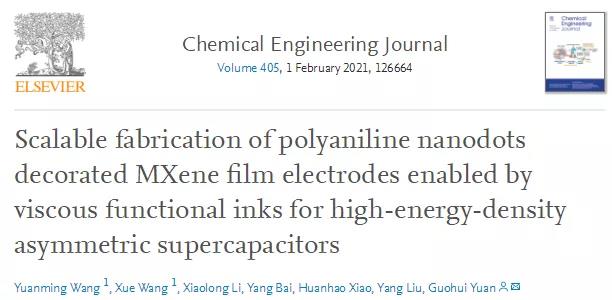

MXene (Ti3C2Tx) film has ultra-thin characteristics and ultra-high volume capacitance, so it is highly favored in flexible energy storage devices (especially supercapacitors). Compared with MXene-based symmetrical supercapacitors, designing asymmetric devices by combining the positive electrode material and the negative electrode MXene can broaden the operating voltage range and further increase the volumetric energy density. However, there are few ideal flexible positive electrodes with a volume capacitance comparable to the original MXene film electrodes.

Recently, Professor Guohui Yuan’s research group from Harbin Institute of Technology published a research paper titled: Scalable Fabrication of Polyaniline Nanodots decorated MXene Film Electrodes Enabled by Viscous Functional Inks for High-Energy-Density Asymmetric Supercapacitors in the internationally renowned academic journal Chemical Engineering Journal. This research uses reasonable interlayer heterojunction engineering technology to make MXene-based electrodes also have ultra-high volume performance (1167 F cm-3) under positive voltage. Insert small PANI nanoparticles (about 10nm) into the MXene interlayer to form compact PANI/MXene thin film electrodes. In addition, functional PANI/MXene inks are used to manufacture composite films on a large scale. In the electrode, MXene nanosheets and dispersed PANI nanoparticles combine the comprehensive functions of conductive and flexible substrates. At the same time, PANI nanoparticles not only act as a high-quasi-capacitance material, but also act as an interlayer conductive pillar component to reduce MXene accumulation and realize electron and ion transmission, thereby obtaining an excellent synergistic effect. In addition, the assembled asymmetric device is composed of a full pseudocapacitance compact membrane material, which can provide a high energy density as high as 65.6 Wh L-1 (1687.3 W L-1).

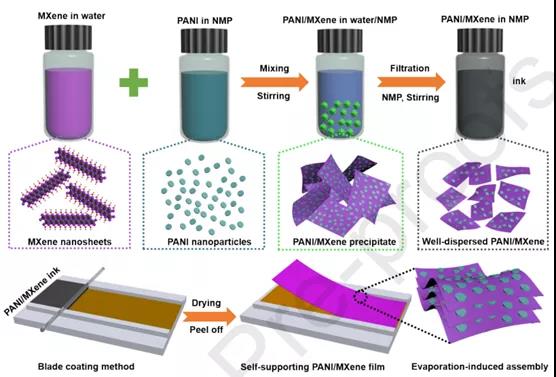
Figure 1. Schematic diagram of the preparation of PANI/MXene ink and self-supporting PANI/MXene flexible film
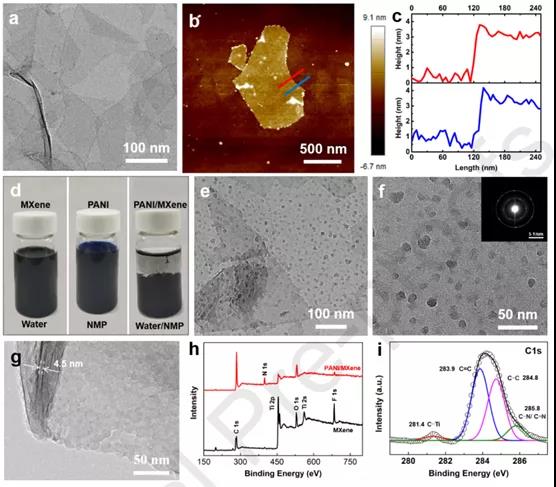
Figure 2. (a) TEM image of layered MXene nanosheets (b) AFM image of MXene nanosheets, and (c) the corresponding height profile along the center line of (b) (d) MXene dispersed in different solvents, Digital photos of PANI and PANI/MXene composites (eg) are from solution-assisted self-assembly (e, f) low PANI mass percentage (20%) and (g) high PANI mass percentage (70%) PANI/MXene composites TEM image (f) SAED spectrum (h) XPS spectrum (i) C 1s high-resolution XPS spectrum
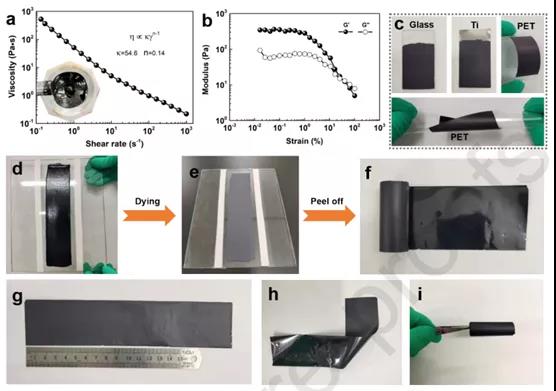
Figure 3. PANI0.7/MXene ink was used to introduce the performance of viscous ink, and then the film formation with/without substrate was demonstrated
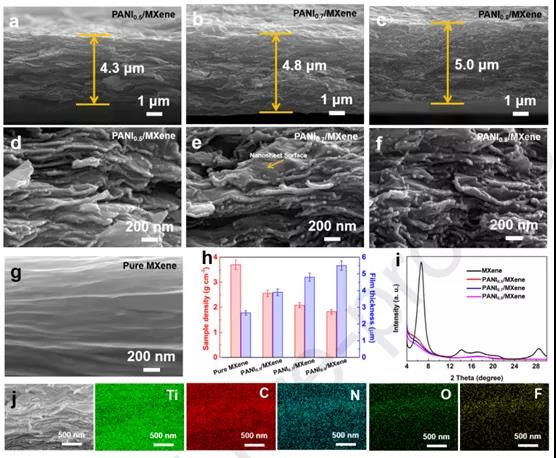
Figure 4. (af) The cross-sectional image of the corresponding material shows that PANI nanoparticles and MXene nanosheets are well assembled to form an ordered stack structure in the composite film. (h) The sample density and film thickness vary with PANI nanomaterials Change with increasing content (i) XRD pattern of pure MXene film and PANI/MXene film (j) EDX element mapping
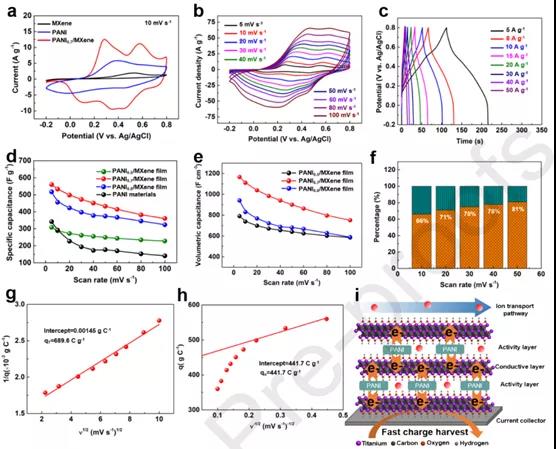
Figure 5. Electrochemical performance graph of PANI0.7/MXene membrane electrode
Figure 6. Electrochemical performance of a fully pseudocapacitive asymmetric device designed with PANI0.7/MXene and MXene electrodes as the positive and negative electrodes, respectively

In this paper, a self-supporting PANI/MXene film was successfully manufactured on a large scale by using PANI/MXene ink and a simple doctor blade coating technology. In the composite membrane, small PANI nanoparticles are inserted into the MXene interlayer to form a compact insertion structure. In the structure, the intermolecular bonding between MXene nanosheets and PANI nanoparticles gives the film good flexibility and structural stability. At the same time, a fast electron and ion transmission path is established to achieve high electrochemical performance. As a result, the best PANI0.7/MXene exhibits ultra-high volume capacitance performance in 1M H2SO4 aqueous electrolyte, which is 1167 F cm- at 5 mV s-1 compared with the pure MXene electrode tested in the same electrolyte. 3. Because there are a large number of positive electrochemically active PANI nanoparticles in the middle layer of the composite membrane, the working potential window can be extended to 0.8V. In addition, by assembling the positive PANI0.7/MXene film and the negative MXene film together, a fully pseudocapacitive asymmetric device can be fabricated to expand the voltage window and enhance the volumetric energy density of MXene-based symmetric supercapacitors. When the power density is 1687.3 W L-1, the maximum energy density obtained is 65.6 Wh L-1, which exceeds most previously reported MXene-based supercapacitors. Our strategy of anchoring positive electrochemically active materials in the MXene intermediate layer to achieve a compact electrode structure is very effective for advancing high energy density energy storage devices.
Literature link:
https://doi.org/10.1016/j.cej.2020.126664
This information is sourced from the Internet for academic exchange only. If there is any infringement, please contact us to delete it
- Previous: Adv. Funct. Mater.|Spr
- Next: IF 14.1! Tumor-derived


 mxene academic
mxene academic